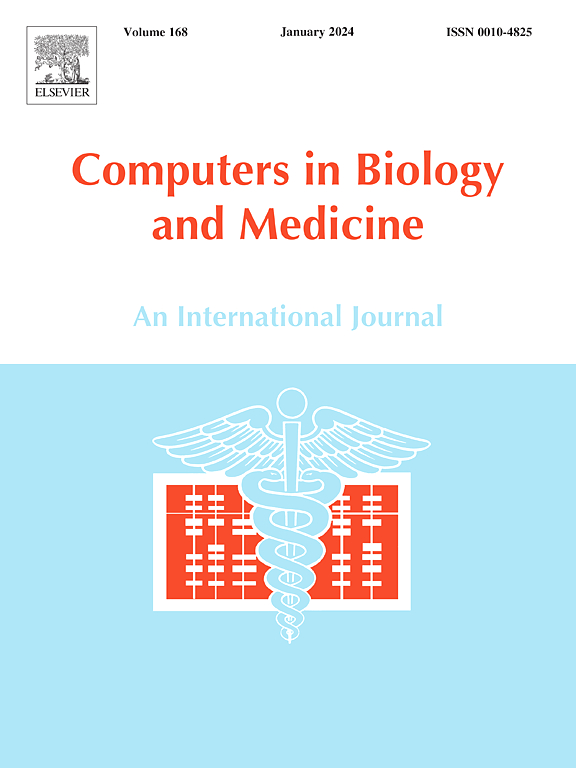COL1A1在结直肠癌和炎症性肠病中差异表达基因的综合生物信息学分析揭示的关键作用
IF 6.3
2区 医学
Q1 BIOLOGY
引用次数: 0
摘要
由于早期癌症检测对炎症性肠病(IBD)患者仍然至关重要,因此迫切需要确定结肠炎相关癌症(CAC)的肿瘤发生生物标志物。这项计算机研究探讨了IBD和CAC之间的关系,特别是关于差异表达基因(DEGs)。方法采用综合生物信息学工具和公共数据库。GEO (GSE102133、GSE48958、GSE9348、GSE83687、GSE138202)数据使用GEOexplorer进行处理。然后用DAVID、SRplot对deg进行功能注释,并通过metscape进行综合分析。使用oncompression和Human Protein Atlas进行验证。生存分析采用GEPIA2。通过miRTargetLink 2.0研究miRNA相互作用。采用TIMER 2.0软件分析免疫浸润情况。使用cbiopportal、Kaplan-Meier绘图仪检测COL1A1的表达和突变,使用MethSurv分析DNA甲基化。使用UALCAN数据库进行COL1A1基因启动子甲基化与组织类型和临床数据的相关性研究。在R环境下进行COL1A1的ROC分析。结果我们的分析确定了三个潜在的中枢基因(ICAM1, LAMC1和COL1A1),与正常组织相比,它们在IBD和癌组织中过表达,因此可能在CAC中发挥作用。此外,COL1A1低表达患者比高表达患者的无病生存期更长(p = 0.01)。因此,选择该基因进行进一步分析,并确定为最关键的基因。结论col1a1具有显著的免疫组化、突变和甲基化数据。需要进一步的研究,包括机器学习和临床数据来验证结果。本文章由计算机程序翻译,如有差异,请以英文原文为准。
The critical role of COL1A1 revealed by integrated bioinformatics analysis of differentially-expressed genes in colorectal cancer and inflammatory bowel disease
Purpose
There is an urgent need to identify biomarkers of tumorigenesis for colitis-associated cancer (CAC) as early cancer detection remains crucial for patients with inflammatory bowel disease (IBD). This in silico study examines the relationship between IBD and CAC, with particular regard to differentially-expressed genes (DEGs).
Methods
Integrated bioinformatics tools and public databases were employed. Data from GEO (GSE102133, GSE48958, GSE9348, GSE83687, GSE138202) were processed using GEOexplorer. DEGs were then functionally annotated with DAVID, SRplot, and integrated analysis via Metascape. Validation used Oncopression and Human Protein Atlas. Survival analysis employed GEPIA2. miRNA interactions were studied via miRTargetLink 2.0. Immune infiltration was analyzed with TIMER 2.0. COL1A1 expression and mutations were examined using cBioPortal, Kaplan-Meier plotter, and DNA methylation was analyzed using MethSurv. Correlation of COL1A1 gene promoter methylation with tissue type and clinical data was performed using the UALCAN database. The ROC analysis of COL1A1 was conducted in the R environment.
Results
Our analysis identified three potential hub genes (ICAM1, LAMC1, and COL1A1), which are overexpressed in IBD and cancer tissues compared to normal tissue, and hence may play a role in CAC. Furthermore, patients with lower COL1A1 expression had longer disease-free survival (p = 0.01) than those with higher expression. Therefore, this gene was chosen for further analysis and identified as the most crucial.
Conclusion
COL1A1 reveals significant immunohistochemistry, mutations, and methylation data. Further studies involving machine learning and clinical data are required to validate the results.
求助全文
通过发布文献求助,成功后即可免费获取论文全文。
去求助
来源期刊

Computers in biology and medicine
工程技术-工程:生物医学
CiteScore
11.70
自引率
10.40%
发文量
1086
审稿时长
74 days
期刊介绍:
Computers in Biology and Medicine is an international forum for sharing groundbreaking advancements in the use of computers in bioscience and medicine. This journal serves as a medium for communicating essential research, instruction, ideas, and information regarding the rapidly evolving field of computer applications in these domains. By encouraging the exchange of knowledge, we aim to facilitate progress and innovation in the utilization of computers in biology and medicine.
 求助内容:
求助内容: 应助结果提醒方式:
应助结果提醒方式:


